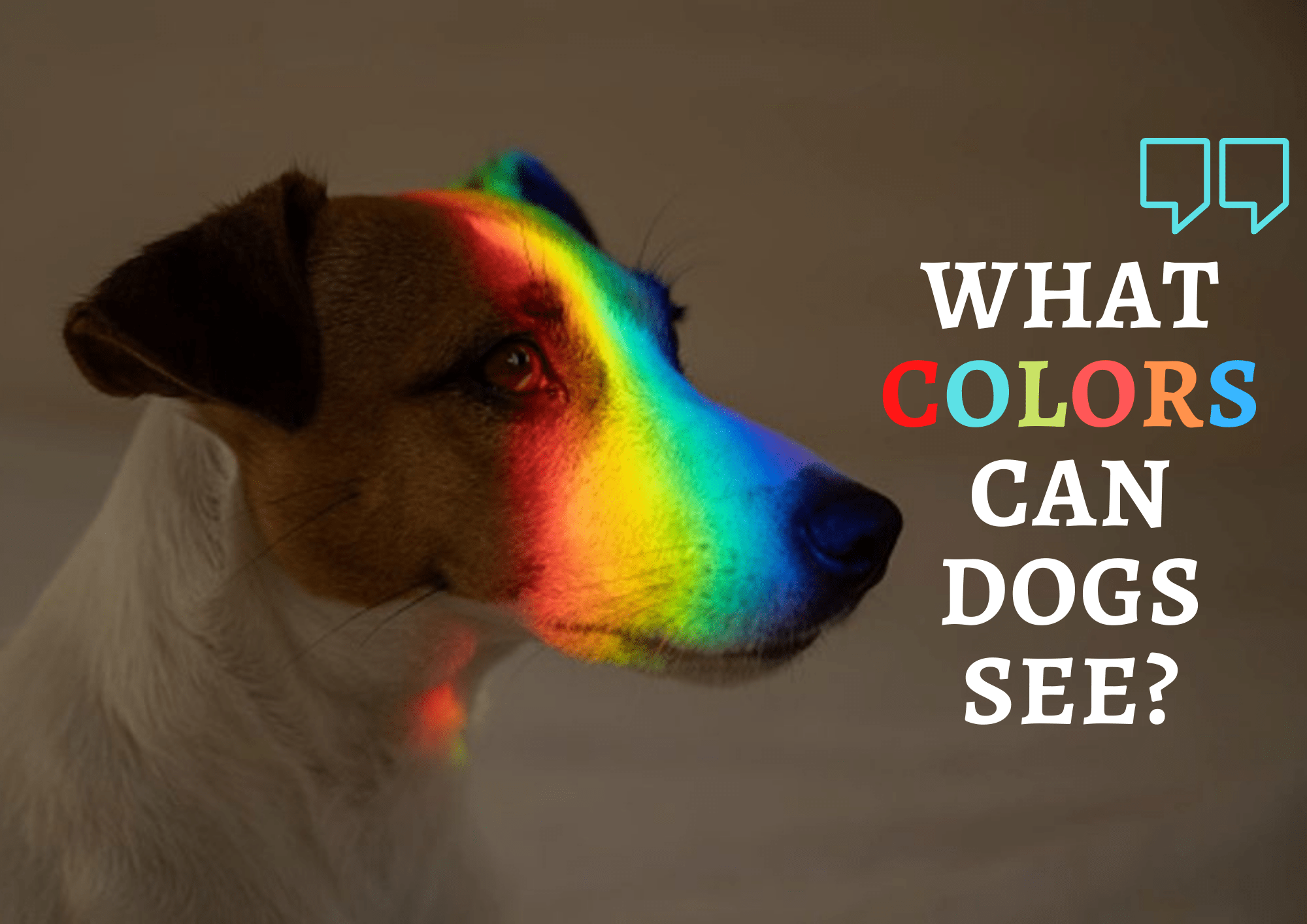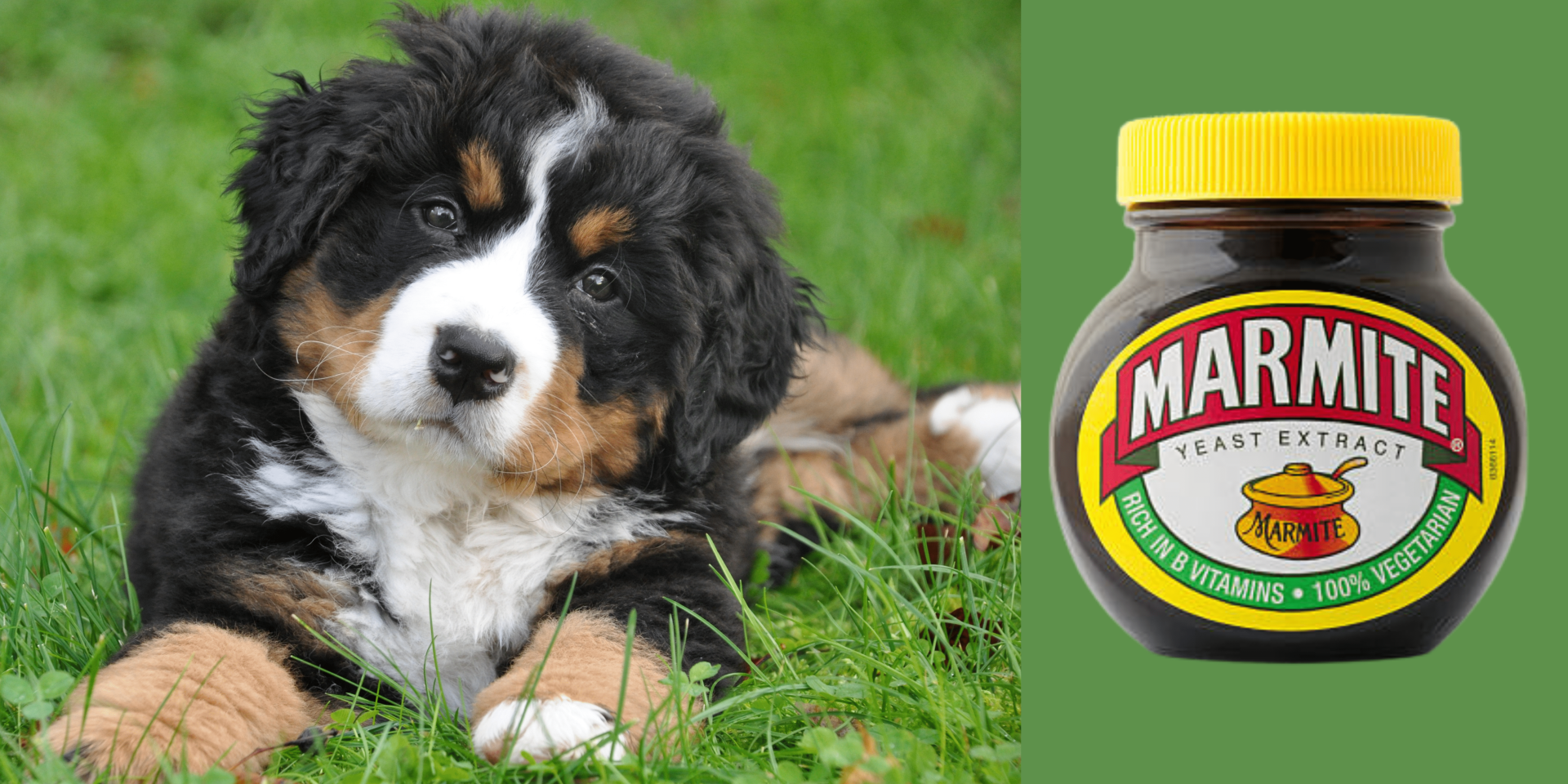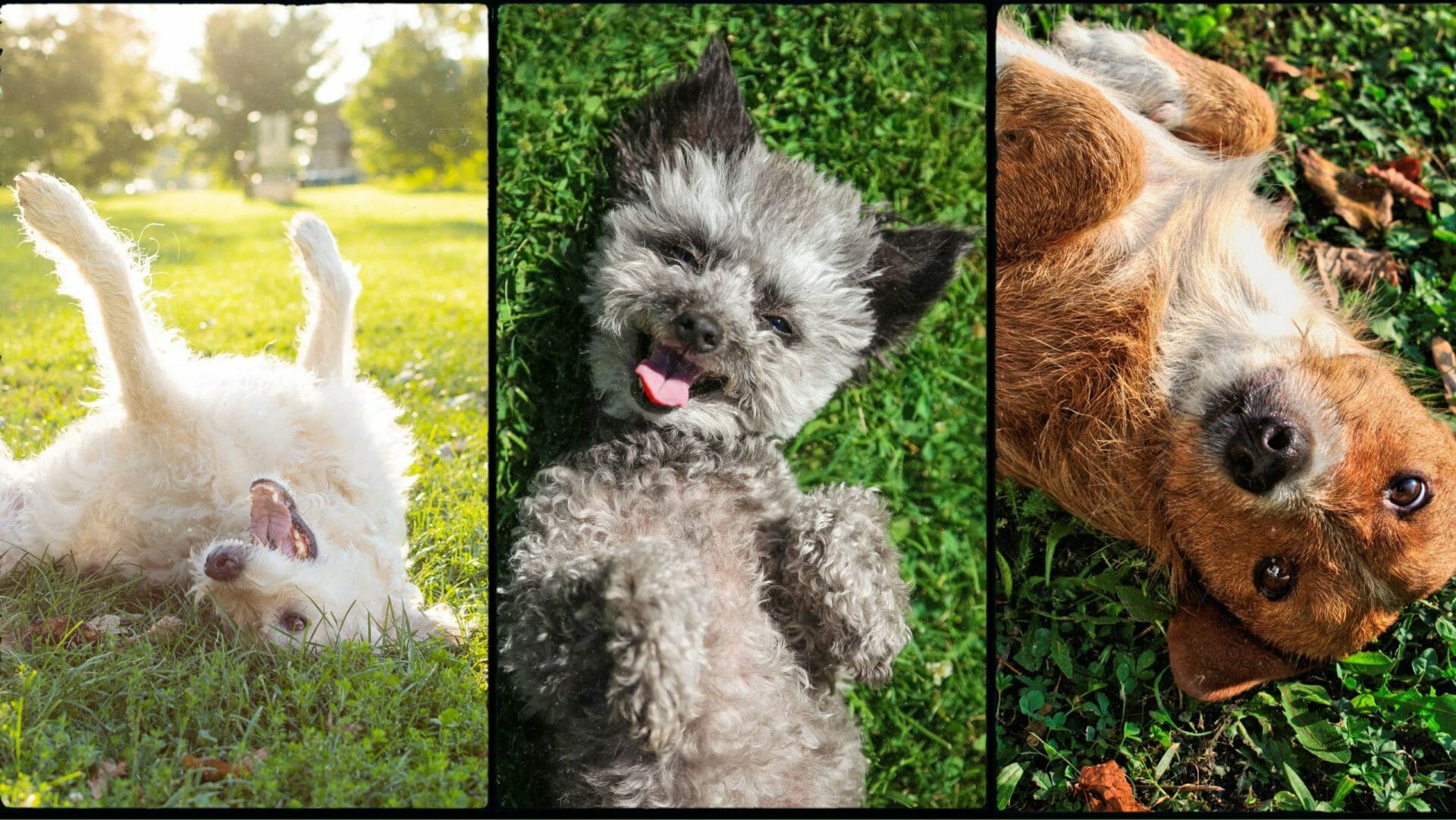What Colors Can Dogs See?
It is time to remove the idea that dogs just can see the world in grayscale because that is not true. Our furry friend can see some colors and the science support it.
Dogs are our best friends and most faithful companions, those who are always willing to wait for us, play with us, or cheer us on a particularly bad day. As they have evolved with us, (by training them, we change their brain structure, according to research), there are many questions we ask ourselves about them: they seem to smile, but do they really? Do they dream? And, one of the most frequent, do they see colors like us?
Some people think that they see (and also dream) in black and white, while others choose to believe that they do so in the same degree of colors as us humans. In fact, neither one nor the other. As the psychologist, Stanley Coren explains in an article published in ‘Psychology Today: “Many people have misinterpreted that dogs are color blind and think that they only see in gray scales. The truth is that they do see colors, but the colors they see are as vivid and varied as what humans see.”
We can take this information into account when choosing a toy to ensure that they can differentiate them from other toys and locate them on the ground.
How do Dogs See?
The dog’s primary senses are smell and hearing, yet vision also plays an important role in communicating and meeting basic needs.

Dogs do not see in Black and White, it is one of the most widespread false myths about dogs throughout the world. The eye is made up of two types of cells; cones and rods. The answer to how dogs see is found in cones, the photosensitive cells found in the eyes that are sensitive to color and detail. Humans have 150 cones and trichometry vision, with a sensitivity to the colors red, blue, and green, while the dog has only 40 cones, so it has dichromatic vision, being sensitive to blue and yellow.
So do Dogs See Colors?
Yes, but they are not able to differentiate as many colors as we are, since they are not sensitive to the color red. Despite this, dogs have a greater sensitivity to the perception of movement and a greater visual acuity than we do.
What Colors do Dogs See?
According to various studies, the dog is able to distinguish various shades of Blue, Yellow, and Gray; but they are not able to distinguish Green, Pink, Red, or Purple.
How do dogs see colors?
We leave you two comparative images of how a human would see the same image (top photo) and how a dog would see it (bottom photo). This photo is not 100% accurate but is based on the latest Canine Vision Studies.

We can see how the dog is able to differentiate between Yellow and Blue, while Red, Green, or Orange would acquire a Grayish or Brown hue that prevents them from differentiating 100% from grass, for example. For all this, it is advisable to bet on Blue and Yellow, which are the most striking colors for the dog.
The Vision of the Dogs
When they are born, the cubs cannot see, they are blind. In fact, the development of the vision of dogs is similar to that of human vision but with relevant differences. At birth, as we have said, the puppy is blind and the only senses that work are smell, taste, and touch. During the first months of life, sight is in the development phase. After six weeks of life, puppies begin to develop their visual perception progressively and it is not until 3 months that they reach their definitive vision. Therefore, it is important to bear in mind that the way dogs see the world up to three months is different from how they will do it from that moment on. As with babies, during the early stages of development, the senses of Touch and Smell become more important.
Dogs do not See in White and Black
As mentioned at the beginning, for a long time it was doubted whether the vision of dogs was Photopic (capable of distinguishing colors) or Scotopic (capable of distinguishing only white, black, and shadows). Today, when it comes to how dogs see, they are known to distinguish colors, although not in the same quantity and quality that people do.
As the team of Animal Behavior Ethologists explains, from the anatomical point of view, there are two types of photoreceptors in the retina of many mammals: rods and cones. The rods are those used for vision in the dark and produce a Scotopic type of vision. The latter receive more signals than the rods in the presence of greater light intensity and are responsible for Photopic vision.
In dogs, the presence of rods is proportionally much higher than that of the cones. This shows that dogs cannot differentiate colors in the same way as humans, although they are able to distinguish some of them. This anatomical constitution and its consequent vision capacity of dogs have an evolutionary explanation. Again, Animal Behavior experts clarify that, while humans are daytime active mammals (we need more cones than rods), Dogs are most active in twilight hours, when vision depends on rods.
For dogs, evolutionarily, colors are not as relevant as for people, but being able to see in low light is. So if we have to summarize how dogs see compared to humans, we could say that dogs cannot see as wide a range of colors as people, but they have a greater ability to see in the dark than we do.
For the avoidance of doubt, we can say that dogs see in colors, but not in the same colors as us humans. It is interesting to see that, most likely, dogs distinguish Black or Blue good from Yellow, for example, but cannot, instead, distinguish red, orange, and green.
In addition to the difference in the color range, the vision of dogs differs from ours in something else. As explained in the different medical research, what happens is that dogs are capable of processing more images per second than we are, which allows them to see things in motion with more precision. If we compare the vision of dogs with that of people, we are only able to see in our brain about 60 images per second, while dogs see between 70 and 80 times per second.
Acuity versus Sensitivity
Many other researchers give another important point about the way dogs see the world: In Mammals, it happens that the concepts of visual sensitivity and visual acuity are hopelessly at odds. This means that those species that are capable of seeing in low light (sensitivity) do not have as much ability to distinguish the details of the things they look at in optimal light conditions (acuity) and vice versa. In humans, acuity prevails while in dogs, sensitivity.
Can Dogs see in the Dark?
Taking into account everything that we have explained above, we can say that Dogs can see much better than people in low light conditions. That is, it is not that they see in absolute darkness, but they do need less light than we do to be able to see and, above all, to detect when something is moving in their field of vision. To explain how dogs see in the dark, we have to speak of the so-called “Tapetum Lucidum”.
Tapetum Lucidum or why do Dogs’ Eyes Glow in the Dark?
The pupil of a dog has a great capacity for dilation, which allows any light, no matter how dim, to stimulate the retina. The retina is precisely where the tapetum lucidum is found.
The tapetum lucidum is a layer of reflective cells that makes the dog’s eyesight an excellent instrument for night vision because it allows him to make better use of light. This tapestry of cells is located at the bottom of the retina, it is typical of nocturnal mammals and we humans do not have them. Tapetum lucidum is what makes dogs’ eyes shine when directly focused on light, and also makes them so sensitive to unexpected lights and the flash in the photographs is proof of it.
Dogs see in colors, although they do not distinguish the same color gamut as humans. They are better able than us to distinguish movement, and also to see in low light conditions. Taking all this into account, we must know that dogs see the world differently from us. They are animals of another species, with capacities and limitations different from ours. We must not forget it and educate them always respecting their differences and their potentialities.

Now that you know that your dog can see some colors, pay attention when he cannot find the ball, most probably he cannot distinguish it from the floor or grass. Try to buy some toys in blue, for example, he will be more than happy.
Related Posts
- 15 Best Pocket Pets for Companionship
- 20 Awesome Brown Cat Breeds You Should Know
- How Long Does a Cat Hold a Grudge?
- What Colors Can Dogs See?
- Why Do Dogs Roll in the Grass?
- How Long Does a Cat Hold a Grudge?
- Why Does My Dog Keep Sneezing?
- Spider Monkey Pet (Everything You Need To Know)
- Keeping Moths as Pets (All You Need to Know)






